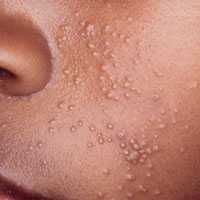Long Term Effects
What are the long-term effects?
Recovery from one molluscum infection does not prevent future infections. Molluscum contagiosum is not like herpes viruses which can remain dormant (“sleeping”) in your body for long periods of time and then reappear. If you get new molluscum contagiosum lesions after you are cured, it means you have come in contact with an infected person or object again.
Complications
The lesions caused by molluscum are usually benign and resolve without scarring. However scratching at the lesion, or using scraping and scooping to remove the lesion, can cause scarring. For this reason, physically removing the lesion is not often recommended in otherwise healthy individuals.
The most common complication is a secondary infection caused by bacteria. Secondary infections may be a significant problem in immunocompromised patients, such as those with HIV/AIDS or those taking immunosuppressing drug therapies. In these cases, treatment to prevent further spread of the infection is recommended.

Typical molluscum lesion. Note the pearly appearance and the dimple in the center of the bumps. Image courtesy L. Sperling, MD, Walter Reed Army Medical Center.

Less typical-appearing numerous lesions on the face of a patient. Image courtesy Scott Norton, MD, MPH, Dept. of Dermatology, Walter Reed Army Medical Center
- Page last reviewed: May 11, 2015
- Page last updated: May 11, 2015
- Content Source:


 ShareCompartir
ShareCompartir